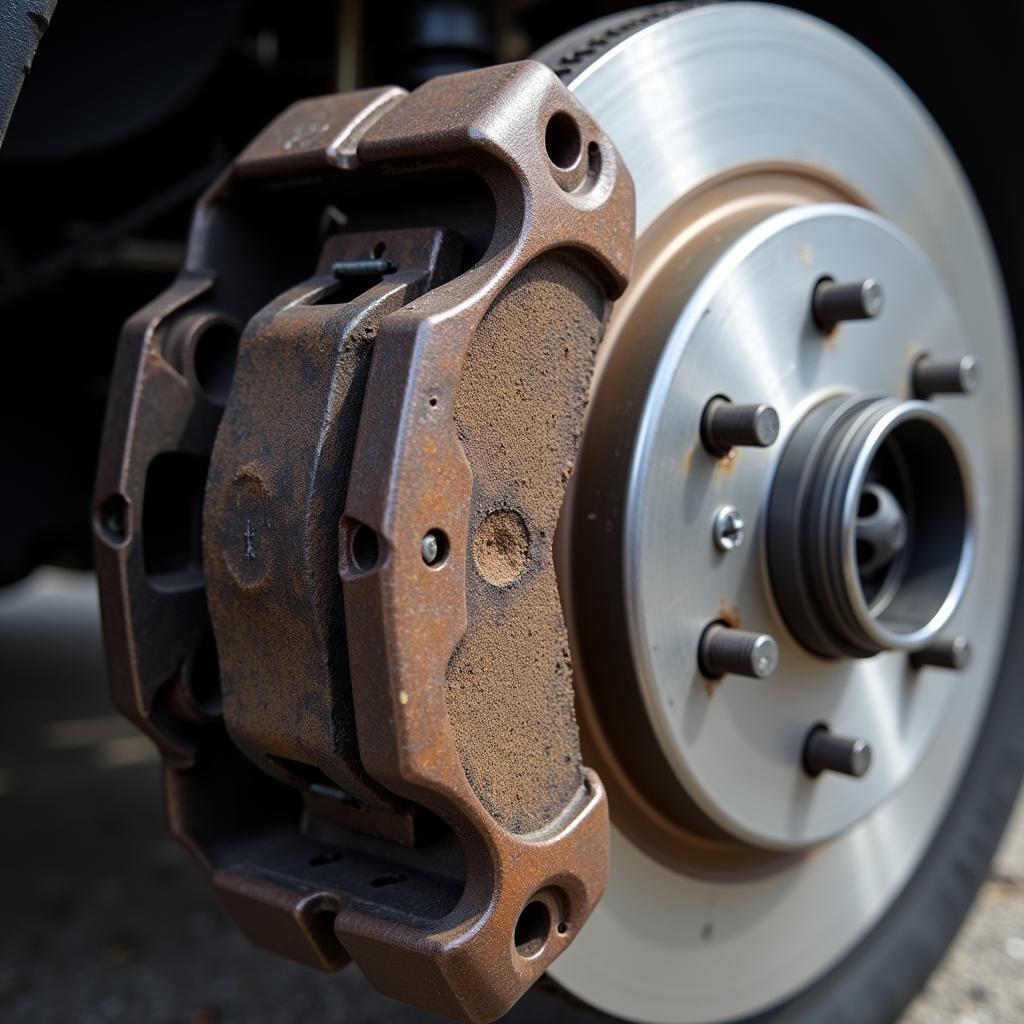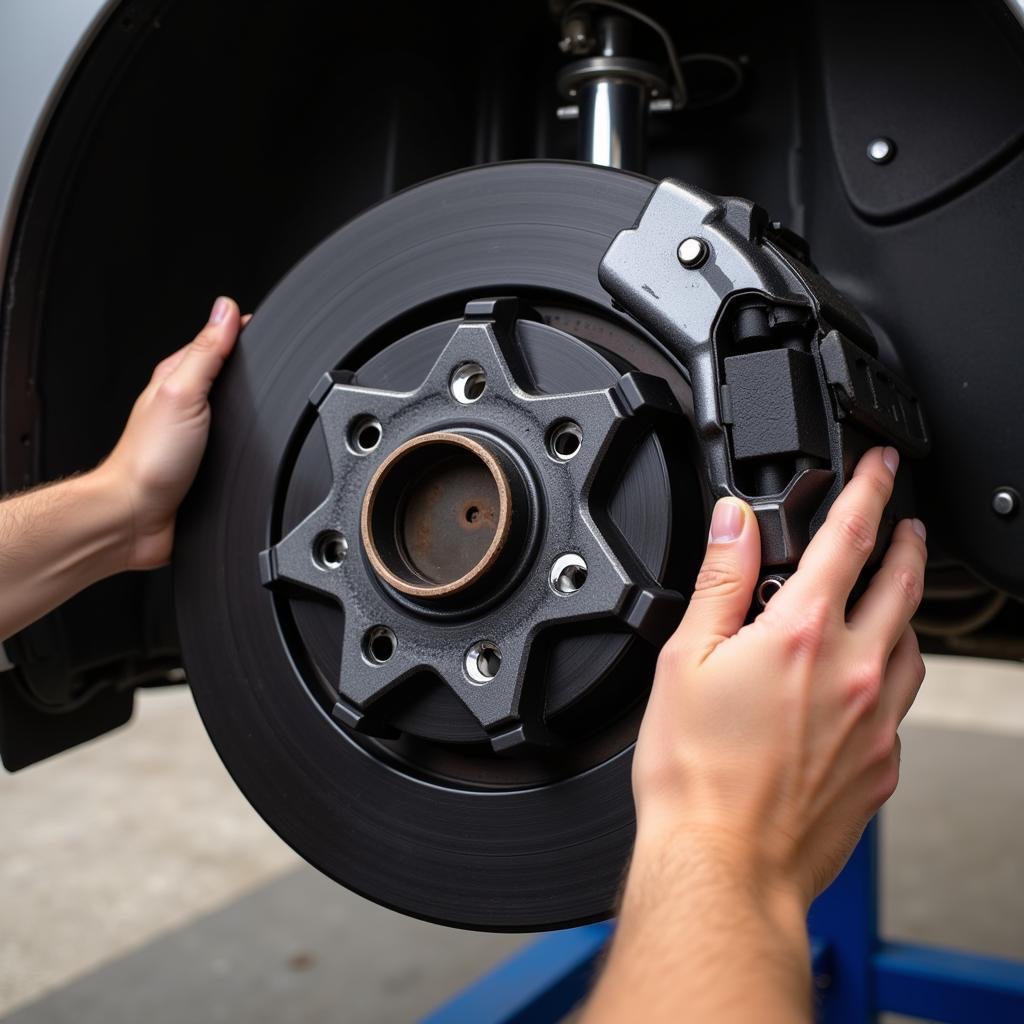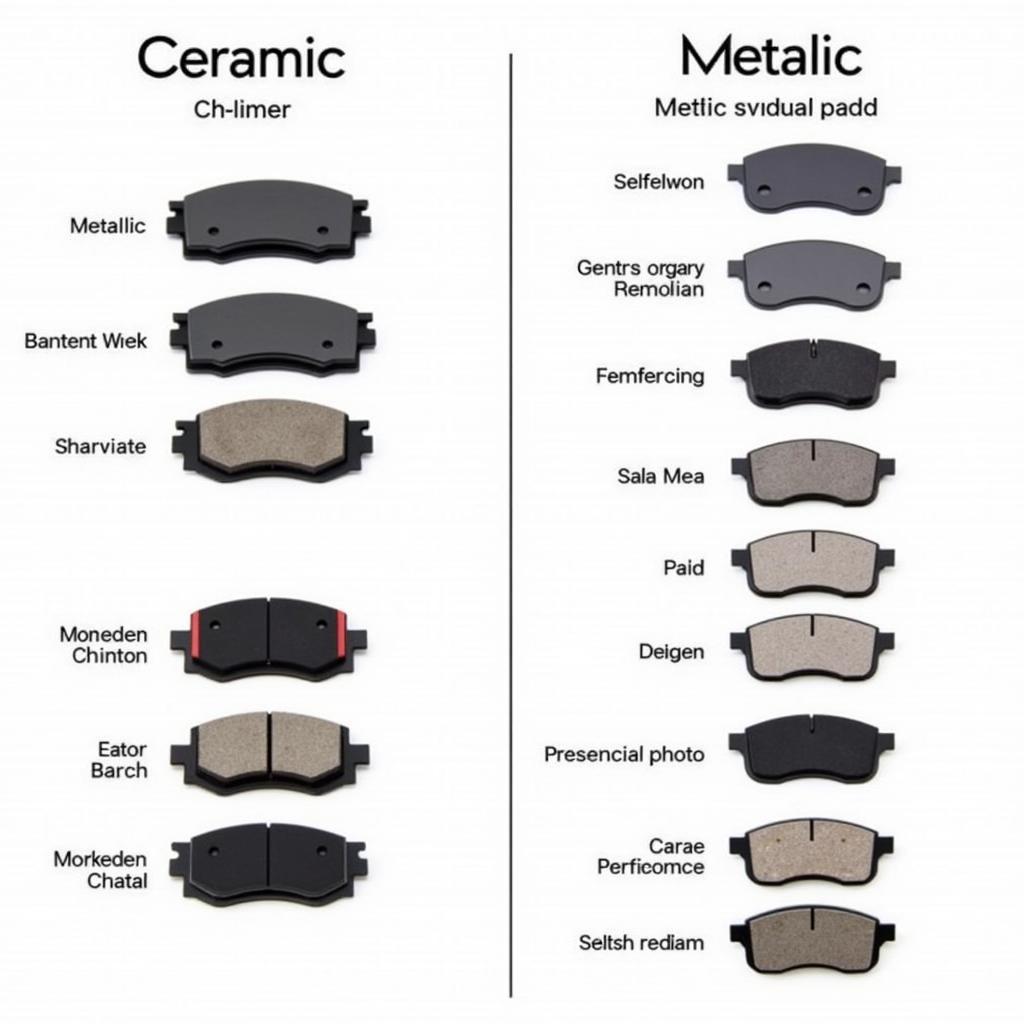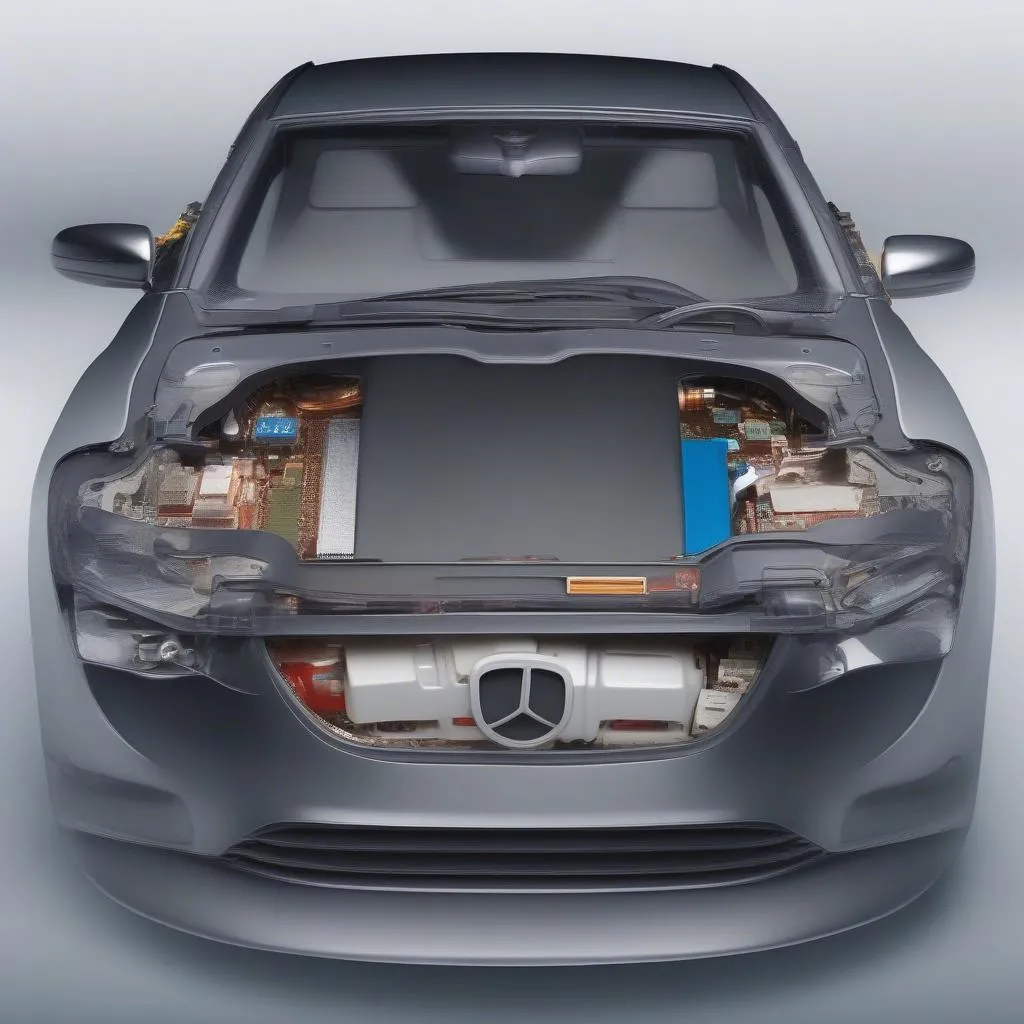That pesky brake pad warning light on your Mercedes dashboard? Don’t ignore it. Understanding the “brake pad warning mercedes” light and what to do is crucial for your safety and the longevity of your vehicle. This guide will cover everything you need to know about the Mercedes brake pad warning light, from diagnosing the issue to finding solutions and preventing future occurrences. See our article on the Mercedes C220 brake pad warning light for model-specific information.
Understanding the Brake Pad Warning Light
The brake pad warning light is a critical safety feature in your Mercedes. It illuminates when your brake pads wear down to a certain thickness, signaling the need for replacement. This warning system helps prevent damage to your brake rotors and ensures optimal braking performance. Ignoring the warning can lead to costly repairs and potentially dangerous driving conditions.
Diagnosing the Problem: Is it Really the Brake Pads?
While the brake pad warning light typically indicates worn brake pads, it can sometimes be triggered by other issues, such as a faulty sensor or low brake fluid. To accurately diagnose the problem, start by visually inspecting your brake pads. If they appear thin or you notice a grinding noise when braking, it’s likely time for a replacement. Alternatively, you can use a diagnostic tool to check the brake pad sensor readings.
 Mercedes Brake Pad Wear Indicator
Mercedes Brake Pad Wear Indicator
If you’re uncertain about your diagnosis, it’s always best to consult a qualified mechanic. They can perform a thorough inspection and identify any underlying problems. Remember, your brakes are essential for safety, so don’t hesitate to seek professional help.
How Long Can You Drive with the Brake Pad Warning Light On?
The “mercedes brake pad warning light how long do i have” question is common, but the answer varies. While you might be able to drive for a short period, continuing to drive with significantly worn brake pads can damage your rotors and compromise your braking ability. It’s best to address the issue promptly. Check out our article discussing how long you can drive with the brake pad warning light illuminated on a Mercedes.
Replacing Your Mercedes Brake Pads
Replacing brake pads on a Mercedes can be done by a DIY enthusiast or a professional mechanic. If you choose the DIY route, ensure you have the correct tools and follow the proper procedures. Using high-quality brake pads is also essential for optimal performance and longevity. Learn more about the brake pad warning light on Mercedes vehicles by visiting our comprehensive guide.
 New Brake Pad Installation on a Mercedes
New Brake Pad Installation on a Mercedes
Preventing Future Brake Pad Issues
Regular brake maintenance is key to preventing premature brake pad wear. This includes regular inspections, fluid checks, and rotor maintenance. Driving habits also play a significant role. Avoid aggressive braking and coasting whenever possible to reduce wear and tear on your brake system. For more information on checking your Mercedes brake pads warning, see our detailed guide.
Remote Diagnostics and Software Solutions
Advancements in automotive technology now allow for remote diagnostics and software updates to address certain brake system issues. This innovative approach can often save time and money by identifying problems quickly and efficiently. For example, a software update could recalibrate a faulty brake pad sensor without requiring a physical visit to a mechanic.
What are the benefits of remote diagnostics?
Remote diagnostics offers a faster and more convenient way to identify and sometimes even fix certain car problems.
Choosing the Right Brake Pads for Your Mercedes
Selecting the right brake pads for your Mercedes involves considering factors such as driving conditions, performance requirements, and budget. Ceramic brake pads generally offer superior performance and longevity compared to traditional metallic pads, but they often come at a higher price. Consult your owner’s manual or a qualified mechanic for recommendations specific to your Mercedes model. If you’re experiencing a brake warning light with ceramic pads on your Mercedes E320, you can find more information in our specialized guide.
 Mercedes Brake Pad Types Comparison
Mercedes Brake Pad Types Comparison
“Choosing the correct brake pads is just as important as proper installation,” says renowned automotive engineer, Dr. Klaus Mueller. “Using the wrong type can negatively impact braking performance and even damage your brake system.”
Conclusion
Addressing the brake pad warning light on your Mercedes should be a top priority. Understanding the causes, diagnosis, and solutions outlined in this guide will empower you to maintain your vehicle’s safety and performance. Don’t delay, take action today to ensure your Mercedes brakes are in optimal condition. Remember, proactive maintenance is always better than reactive repairs.
FAQ
- What does the brake pad warning light on a Mercedes mean? It typically means your brake pads are worn and need to be replaced.
- How long can I drive with the brake pad warning light on? It’s not recommended to drive for extended periods with the warning light illuminated, as it can damage your brakes.
- Can I replace my Mercedes brake pads myself? Yes, but it requires the correct tools and procedures.
- What type of brake pads are best for my Mercedes? Consult your owner’s manual or a mechanic for recommendations.
- How can I prevent future brake pad issues? Regular maintenance and mindful driving habits are essential.
- Can remote diagnostics help with brake pad issues? Yes, in some cases remote diagnostics can identify and even fix certain problems.
- What should I do if I’m unsure about diagnosing or fixing my Mercedes brake warning light? Consult a qualified mechanic for a professional inspection and repair.

